The Generation of ATP in Metabolism
ATP (adenosine triphosphate) is the energy foundation of cells. It is essential for various cellular processes. In aerobic organisms, it is produced during metabolism through cellular respiration. During glycolysis, glucose is broken down to produce ATP and NADH. Pyruvate then enters the citric acid cycle, producing more NADH and FADH2. They are electron carriers of the electron transport chain, which causes proton pumping.
ATP synthase uses the energy from this gradient to convert ADP and phosphate into ATP (Martinez-Ramirez et al., 2018). This process is called oxidative phosphorylation, as shown in Figure 1. In photosynthetic organisms, photophosphorylation generates ATP during photosynthesis in light-dependent reactions, further supporting vital cellular functions.
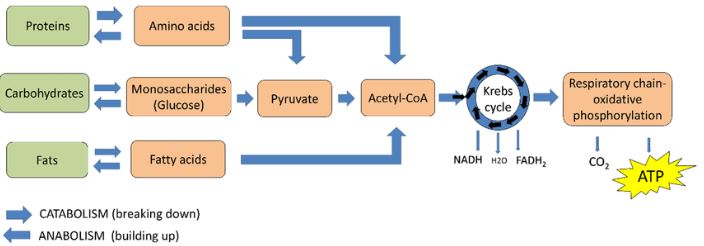
Metabolic Pathway
The next is a metabolic route, a set of chemical events that occur in cells and turn a substrate into a final product. The fact that metabolic pathways govern energy flow and biomolecules in cells supports significant body and cellular activities. Energy generation, growth, and the synthesis or breakdown of molecules are all crucial tasks.
It’s worth mentioning that enzymes, or proteins that catalyze these events play a crucial part in metabolic pathway management. The metabolic route is a catabolic or anabolic operation that breaks down molecules to release energy, generating complex molecules from simpler ones. Such pathways include glycolysis for energy production and the citric acid cycle for cellular respiration, as seen in Figure 2. Together, these pathways make up the body’s metabolism.
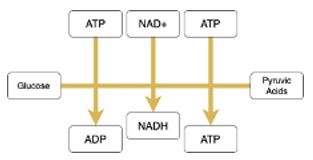
Regulation of Metabolic Pathways
Metabolism overall has several pathways and regulatory mechanisms. One of the examples of regulation is enzymatic regulation, where molecules like allosteric regulators regulate and activate enzyme activity, as seen in Figure 3. Feedback inhibition is the process where the end products of a chemical reaction inhibit the initial enzymes and chemical reactions (Libretexts 2.7.1, 2022, para. 4).
The next part is hormonal control, where hormones such as insulin and glucagon impact the lipid enzymes. The last is genetic regulation, in which cells regulate enzyme levels through gene expression. With the help of all these regulatory processes, the standard and efficient functioning of the metabolic pathway is ensured.
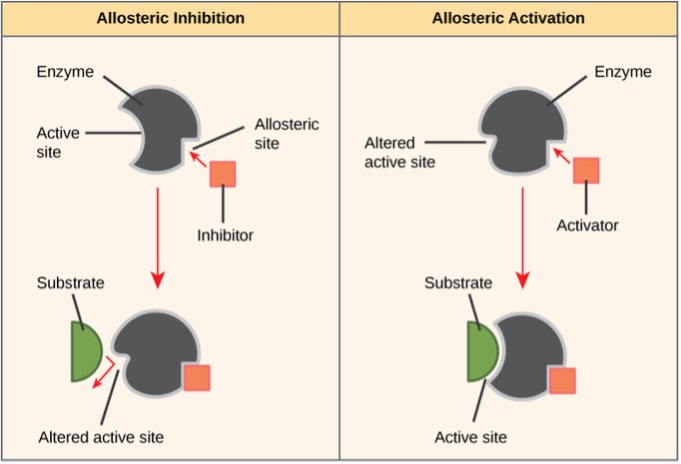
The Significance of the Tricarboxylic Acid Cycle (Krebs Cycle) in Generating ATP
One way to provide energy for ATP generation in metabolism is the Krebs cycle. The Krebs cycle is the primary stage in the synthesis of ATP during aerobic species’ cellular respiration. Acetyl-CoA is generated during the breakdown of carbohydrates from lipids and proteins and subsequently enters the Krebs cycle. The bonds of carbohydrate molecules, lipids, and proteins are broken due to the cycle’s chemical processes, and the energy released during the breaking of chemical bonds is transformed and transported into electron carriers NADH and FADH2.
Carbons and oxygens formed during the destruction of bonds are converted into carbon dioxide and released in the Krebs cycle. NADH and FADH then transfer their electrons to the electron transport chain, which produces ATP (Libretexts 2.28, 2022, para. 3). The process by which ATP is synthesized is called oxidative phosphorylation and can be seen in Figure 4. Thus, we can say that the Krebs cycle is a chain of chemical reactions and metabolic pathways during which the effective production of ATP occurs.
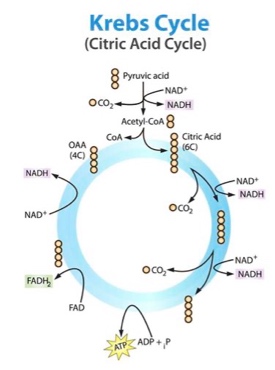
The Role of the Calvin Cycle
Another example of energy production is the Calvin cycle, the dark or light-dependent reaction crucial to photosynthesis in plant cells. In the stroma of chloroplasts, the cyclic metabolic pathway ensures that carbon dioxide enters the organic compound and converts into glucose (Libretexts 5.12C, 2022, para. 4). The primary method the body uses to store and obtain carbon dioxide is solar energy, which has a chemical form and transforms inorganic carbon into organic molecules.
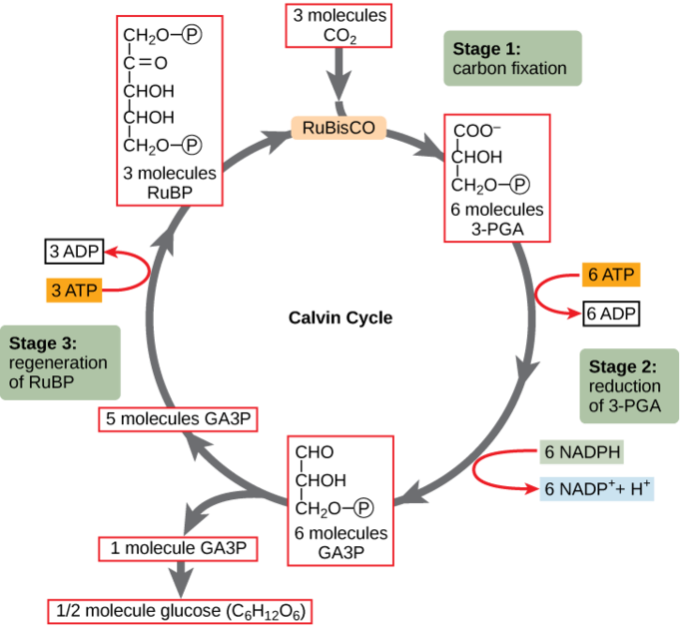
Oxidative Phosphorylation in the Mitochondrion
Lastly, the oxidative phosphorylation procedure occurs in mitochondria of eukaryotic cells and is considered to be the main way of producing ATP. Numerous proteins are involved in electron transportation, which is found in the inner mitochondrial membrane (Szabo et al., 2020). The last electron acceptor, oxygen, receives electrons from molecules like NADH and FADH2 via the electron transport chain that isETC.
An electrochemical proton gradient is created when protons are pushed through the inner mitochondrial membrane and into the intermembranous space when electrons move through the ETC. Potential energy is stored in this proton gradient. This energy synthesizes ATP from adenosine diphosphate (ADP) and inorganic phosphate (Pi) by ATP synthase, which returns protons to the mitochondrial matrix. Chemiosmotic coupling is the term for this. The whole process is illustrated in Figure 6.
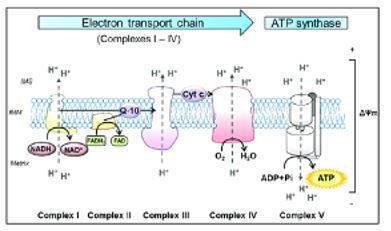
Photosynthesis in the Chloroplast
Another form of metabolism is photosynthesis, which happens in plant chloroplasts and some bacteria. It turns light energy into chemical energy, primarily glucose and other organic compounds. This process is critical to life on Earth because it creates the foundation of the food chain and has substantial environmental repercussions. The Calvin cycle (light-independent activities) and light-dependent reactions are the two fundamental phases of photosynthesis. Pigments like chlorophyll absorb sunlight and turn it into chemical energy in light-dependent activities.
This energy is used to split water molecules, producing oxygen, adenosine triphosphate (ATP), and nicotinamide adenine dinucleotide phosphate (NADPH). Light-dependent activities generate ATP and NADPH, which are then used to power the Calvin cycle. In this cycle, carbon dioxide (CO2) is trapped and transformed into organic molecules, most often glucose (Figure 7). CO2 is integrated into ribulose-1,5-bisphosphate during the Calvin cycle and transformed into carbohydrates via a series of enzyme-catalyzed processes.
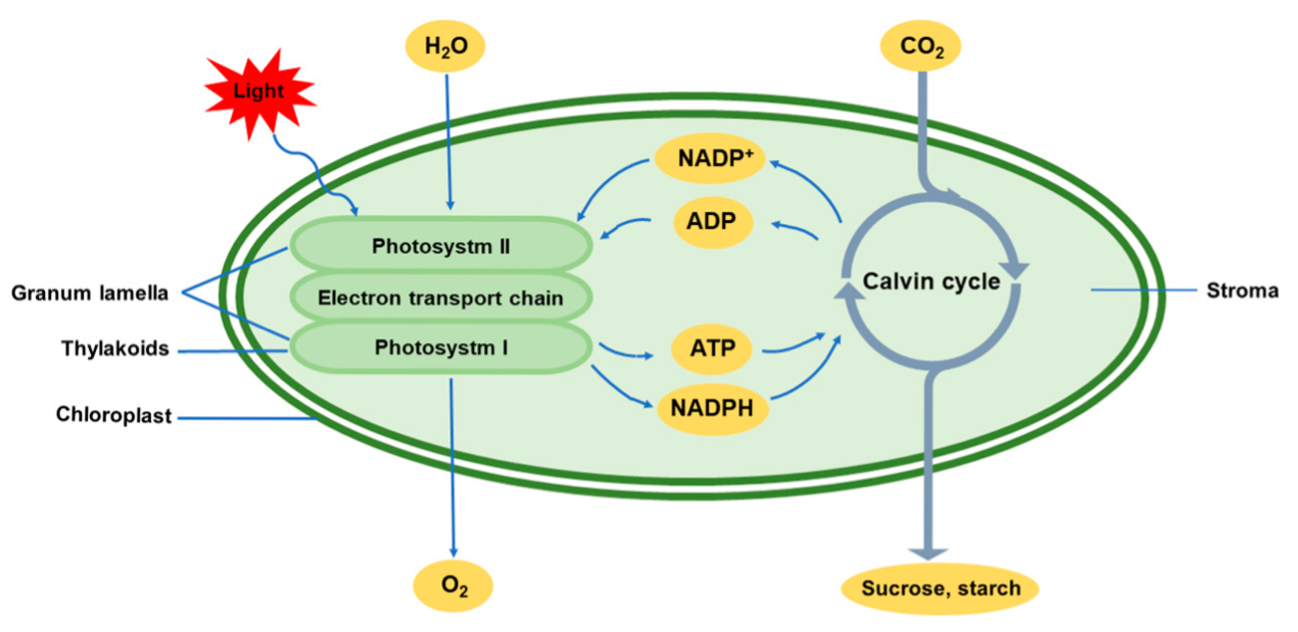
Summary
Overall, it can be said that cell energy ATP can be considered its central unit as it is vital for different processes. It is produced through metabolism in aerobic species, such as glycolysis and the citric acid cycle. Enzymes are also vital in controlling various metabolic processes and ensuring the normal functioning of the entire body system.
As a recommendation, it is vital to review metabolism as part of body processes since it represents the central energy transfers. Providing more energy transmission descriptions and examples connected with ATP is possible. Furthermore, there is a need for more research on cell metabolism, which occurs among other living creatures and bodies.
Reference List
Gan, P. et al. (2019) “Chloroplasts— Beyond Energy Capture and Carbon Fixation: Tuning of Photosynthesis in Response to Chilling Stress,” International Journal of Molecular Sciences, 20(20), p. 5046. Web.
Libretexts (2022) 2.7.1: Control of Metabolism Through Enzyme Regulation, Biology LibreTexts. Web.
Libretexts (2021) 2.28: Krebs Cycle, Biology LibreTexts. Web.
Libretexts (2022) 5.12C: The Calvin Cycle, Biology LibreTexts. Web.
Martínez-Ramírez, I. et al. (2018) “Regulation of Cellular Metabolism by High-Risk Human Papillomaviruses,” International Journal of Molecular Sciences, 19(7), p. 1839. Web.
Szabo, L., Eckert, A. and Grimm, A. (2020) “Insights into Disease-Associated Tau Impact on Mitochondria,” International Journal of Molecular Sciences, 21(17), p. 6344. Web.